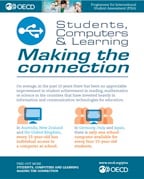
Civic and business leaders have complained about The Los Angeles Times’s out-of-town ownership from time to time over the last 15 years, since its purchase by the Tribune Company. Credit Emily Berl for The New York Times
SEPT. 20, 2015 :: LOS ANGELES — In January, Jack Griffin, the chief executive of Tribune Publishing Company, took his senior management team to visit The Los Angeles Times, the jewel in his company’s portfolio of newspapers.
At a reception at the newspaper, and a dinner downtown, there was one notable absentee — The Times’s new publisher, Austin Beutner. At meetings the next day, he showed up for just an hour, to make a presentation on his strategy for the paper — one squarely at odds with that of its corporate parent.
Tribune has long pushed to centralize virtually all operations and direct them from headquarters in Chicago, running its newspapers as a group.
Mr. Beutner, 55, a prominent Angeleno who made a fortune in finance and who once served as deputy mayor, was outlining an independent path for The Times that was relentlessly local and focused on better technology, new sections and events.
He was forging close relationships with Los Angeles civic and business leaders who wanted a vibrant Los Angeles Times as part of the fabric of the city. He had driven the acquisition of The San Diego Union-Tribune, part of a plan to dominate journalism in California.

Austin Beutner was dismissed as publisher of The Los Angeles Times after a year in the job. Credit Kirk Mckoy/Los Angeles Times, via Associated Press
Two weeks ago, he was called to a conference room and fired.
His departure, from a position he had held only a year, widened a divide between The Times and its corporate parent. In Chicago, executives saw him as imperious and defiant, imperiling a centralization strategy that had recently saved the company $75 million, according to a figure it provided The New York Times.
But to many at The Los Angeles Times, Mr. Beutner and his plan represented ambition and optimism after more than a decade of management turnover, layoffs and cost-cutting that had demoralized many employees and reduced the newsroom from 1,200 to its current staff of about 500. The strategy, focused on growth, had quickly yielded more than $1 million in new revenue, and looked poised to yield more, said three people with knowledge of the company’s finances.
Newsrooms everywhere are given to apocalyptic predictions of their own demise. But more than a dozen current and former Times and Tribune staff members — both in the newsroom and on the business side — suggested that The Times was facing a crisis more dire than any it had previously weathered. It has been battered by cutbacks for so long, they said, that it cannot wait any longer for the company’s strategy, which has shown few signs of working, to bear fruit. It must grow its way to the future, they said, not slash.
Their concern is shared by some of the most powerful people in Los Angeles, many of whom Mr. Beutner numbers as friends. They have risen up to unleash what seems like years of pent-up frustration. “Tribune has just destroyed the paper over the years — they sucked the blood out of it — and only over the last year, since Austin became publisher, did it start to feel like a hometown newspaper again,” said Antonio Villaraigosa, the former mayor in whose administration Mr. Beutner served as deputy mayor.
Mr. Villaraigosa is one of 50 local leaders who signed a letter to Tribune Publishing protesting Mr. Beutner’s firing. The City Council sent its own letter, and the Los Angeles County Board of Supervisors passed a resolution along similar lines. Hispanic groups have expressed concern that Tribune’s Chicago-based management team has little understanding of one of the most important constituencies in Los Angeles.
The Times is not the first newspaper in a major American city to be threatened by industrywide challenges. It used to be family owned, with so much money it had a Picasso collection, and is now part of a publicly owned company, staring at precipitous advertising revenue declines.
Its battle with its ownership, however, has been singularly relentless. Two former top editors (including Dean Baquet, the current executive editor at The New York Times) were forced to leave after refusing to cut jobs. Many Times journalists have never accepted an ownership structure that they felt subjected the paper to the pressure of quarterly earnings at the expense of its journalism.
The former Tribune Company, which spent years in bankruptcy, had long been troubled and had a reputation for making job cuts long before Mr. Griffin arrived in 2014. Tribune Publishing was spun off later that year; the parent company, now known as Tribune Media, took profit-making digital and television assets, and the newspapers’ real estate holdings. The publishing unit took on $350 million in debt.
Those protesting the treatment of The Times see a potential savior in Eli Broad, the billionaire Los Angeles philanthropist who has long wanted to buy the paper but has been repeatedly rebuffed. In the wake of Mr. Beutner’s ouster, Mr. Broad is preparing to try again, his friends say.
In an interview at Tribune Publishing’s New York offices, Mr. Griffin said that though the board would consider any offer, he did not want to see The Times sold. It is vital to his strategy of reducing duplication and sharing content and services across eight major newspapers and several smaller ones. The changes will take time, and require “a team of people rowing in the same direction,” an apparent allusion to Mr. Beutner’s defiance.
Six people familiar with the newspaper’s finances, who spoke on condition of anonymity for fear of losing their jobs or of complicating an already difficult relationship between the newspaper and its parent, said further layoffs were imminent. They will be on the order of $10 million in savings, or about 80 jobs, these people said, and will fall mostly on the newsroom.
When asked if his strategy would increase revenue quickly enough to preclude further layoffs, Mr. Griffin said, “I didn’t say that.” He declined to comment further. Tribune Publishing also declined to make Timothy E. Ryan, who succeeded Mr. Beutner as publisher of The Times and The Union-Tribune, available for an interview.

Jack Griffin, Tribune Publishing’s chief executive, said The Los Angeles Times was vital to corporate strategy. Credit Dominick Reuter for The Chicago Tribune
Mr. Beutner declined to comment, citing legal restrictions. In a Facebook post on the day he was fired, he said that “cost-cutting alone is not a path to survival in the face of continued declines in print revenue and fierce competition in the digital world.” Friends say he remains deeply engaged in The Times’s struggles, and is in close contact with the city’s civic leadership.
As the public face of Tribune Publishing, and the man who helped design and execute its current strategy, Mr. Griffin, 55, has drawn most of the criticism from opponents in Los Angeles. Mr. Beutner and Mr. Griffin had a relationship, said those who know them both, that was somewhere between nonexistent and hostile.
Mr. Griffin emphasized he came from a newspaper family (“I grew up a news junkie,” he said), and worked as a reporter and then as an executive at a series of publishing companies, most recently Time Inc. He left Time Inc. shortly after he joined, in 2011, amid complaints about his management style.
When asked about Mr. Griffin’s tenure, John Huey, editor in chief of the company’s magazines at the time, declined to be interviewed, but provided a statement. He disputed the characterization, aired by Mr. Griffin’s supporters at the time, that he had been done in by the old guard.
“He was welcomed with good will, but when faced with the reality of a large, complex business like Time Inc. he had no clue what to do except spend millions on multiple consulting firms,” Mr. Huey wrote. “He was very threatened by strong players who pushed back so he replaced them with small-timers who, like he, weren’t up to the task.”
Time Warner, Time Inc.’s parent company at the time, “had to get rid of him,” Mr. Huey said. “He was impossible for those above and below him, and he was wrecking the place.”
In response, Tribune Publishing provided an email sent to Mr. Griffin by Jeffrey Bewkes, the chief executive of Time Warner, praising his performance. “You’re doing a great job, and almost everybody at Time Inc. knows it,” Mr. Bewkes wrote. “I also want to convey how very impressed my executives here at Time Warner are by your leadership and what you’ve accomplished in just a few months.”
Mr. Bewkes dismissed Mr. Griffin about three months later. Time Warner declined to comment on the email to Mr. Griffin, but referred to a statement it put out at the time of his dismissal, unusually frank for such circumstances, which said that “his leadership style and approach did not mesh with Time Inc. and Time Warner.”
Tina Brown, the former editor of Vanity Fair and The New Yorker, who has worked with Mr. Griffin and admires him, said that Mr. Bewkes made a mistake in firing Mr. Griffin, whom she said might have been undercut by people with vested interests. “I’ve found working with him that he’s so smart,” she said. “He’s a great, decisive guy, a very, very hardheaded guy.”
His strategy at Tribune Publishing, Mr. Griffin said in an interview on Friday, is simply the one he was instructed to carry out by the Tribune Company. “For better or worse, the company was set up as a platform company with shared services to build and grow and consolidate,” he said.
The board has affirmed its commitment to him, he said, and he intends to continue with his five-point transformation plan, which was recently described in a conference call about company earnings as “one, accelerating our transition to digital; two, diversifying our revenue base; three, accelerating our national sales initiatives; four, maintaining a disciplined cost structure; and five, pursuing accretive acquisitions.”
The current and former Times and Tribune staff members — who requested anonymity because of the fraught relationship between The Times and its owner — said that they viewed the plan as vague and ineffective. They point out that after a decade or more the centralization strategy has not shown signs of turning the newspapers around.
They also lamented the company’s digital technology was dated — specifically, among other things, that it was complex for readers to subscribe online, where other publications have more seamless systems, and that editors must file a corporate ticket to Chicago to make a change on the home page.

Timothy Ryan became publisher after Mr. Beutner's dismissal. Credit Gene Sewwney Jr./The Baltimore Sun, via Associated Press
After the company introduced a new website infrastructure, known as NGUX, unique viewers to The Times’s website declined by 9 percent, and page views over all by 17 percent, according to an internal document from early 2015 obtained by The New York Times.
Mr. Griffin said that there was no magic switch he could flip to make technology better, but that he was working on it, and was seeking to hire people to improve it. A company spokesman said Tribune Publishing remained profitable.
Even by the low standards of a troubled industry, Tribune Publishing has struggled. Its stock price has dropped from a high of over $23 to about $10 since the spinoff. The Los Angeles Times is responsible for about 40 percent of the company’s newspaper revenue, and must bear the same proportion of corporate costs, despite disagreements about strategy. Total revenue for The Times, according to internal figures from earlier this year, is about $480 million. The profit margin, said three people familiar with the newspaper’s finances, who spoke on condition of anonymity to provide confidential information, was about 13 percent.
Projections suggest that revenue at The Times will drop as much as 10 percent, based on declines in print, before the impact of any acquisitions. It is possible, those people said, that the newspaper can cut its way to profitability again for another year or so. But it is not clear what will happen after that. Every round of cuts threatens to diminish the quality of the paper, employees said.
“The last time they cut they hit bone,” said one journalist, who spoke on condition of anonymity for fear of being included in the layoffs. “This time they are going to end up cutting right through.”
Civic and business leaders have complained about the newspaper’s out-of-town ownership in fits and starts for 15 years, ever since Tribune Company’s $8 billion takeover of Times Mirror from the Los Angeles-based Chandler family. But this flare-up has a different tone — it is more biting and more public and involves fond memories, perhaps a bit time-warped, of the pre-Tribune era.
Mr. Beutner’s firing also seems to have struck a nerve because he is a member of the city’s elite. In interviews, local leaders pined for the days when the Chandlers ran the paper, and they had a sympathetic ear in the publisher’s suite. “At least the Chandlers cared about L.A.,” Mr. Villaraigosa said.
It is unclear whether city leaders, for all their agitation, can effect any genuine change. Still, David Fleming, founder of the Los Angeles County Business Federation, and other leaders who signed the letter to Tribune, including Mickey Kantor, a lawyer and former United States commerce secretary, said they were optimistic that the latest outcry would lead The Times back into local hands — with most still pointing to Mr. Broad as the white knight. “I know Eli is still interested,” Mr. Fleming said.
Mr. Kantor said he believed that Mr. Broad intended, if possible, to reinstall Mr. Beutner as the paper’s publisher. That path seems problematic, given that Tribune has already rebuffed Mr. Broad several times. Others close to Mr. Beutner and Mr. Broad admitted that they had no magic bullet even if the newspaper could be acquired, but said that it must be run as a civic trust, not as one branch of a struggling company.
Mr. Ryan, a longtime Tribune executive with no ties to Los Angeles, has been thrust into the middle of the fight. Many in the newsroom doubt that Tribune Publishing can give him the tools to elevate the paper’s fortunes. A national sales strategy, said one person involved at a strategic level, could work if Tribune Publishing were truly national, but the company does not have newspapers in large areas of the country.
Michael Rooney, the company’s chief revenue officer, disagreed. “I think the plan is perfectly aligned to grow revenues. I will tell you that our goal is to be print profitable and digitally dominant,” he said.
All the newspapers benefit from being sold to advertisers as a package, nationally, and can keep local staffs for local sales, he said. He cited the fact that The Times is in the biggest auto market in America, and said it helped the other papers, which include The Hartford Courant and The Orlando Sentinel. When Mr. Rooney was asked how the other papers helped The Times, a Tribune spokesman ended the interview.
In the interview Friday, Mr. Griffin was asked whether, were he an employee at one of his newspapers, he could see why he might want it to be owned by a local billionaire rather than Tribune Publishing. “I can,” he said.
When asked why, he cited the public debate on the matter and said, “It seems to have been made pretty evident." But he said that he had a responsibility to the company as a whole, not just The Times. Pointing to a stack of the company’s various newspapers in the middle of a conference table, he said, “All that’s at stake, too.”
Michael Cieply and Brooks Barnes contributed reporting.
A version of this article appears in print on September 21, 2015, on page A1 of the New York edition with the headline: Firing at Los Angeles Times Focuses Discontent .








 FILE:
FILE: 













